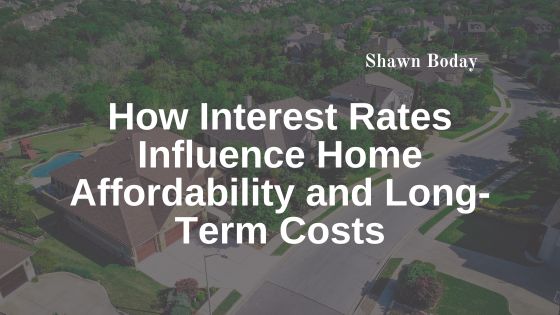Interest rates are one of the most important factors in determining how much home you can afford and what you will ultimately pay over the life of your loan. Even a small change in the rate can significantly impact your monthly mortgage payment, your total interest paid, and your overall buying power. Whether you are a first-time homebuyer or considering a move, understanding how interest rates influence affordability is key to making smart financial decisions.
What Are Interest Rates?
In the context of home buying, interest rates refer to the cost of borrowing money to purchase a home. Mortgage lenders charge interest as a percentage of the loan amount, and this rate can be fixed or variable depending on the type of loan you choose. The interest rate you receive is influenced by a combination of factors, including your credit score, loan type, down payment, and broader economic conditions.
Monthly Payments and Affordability
One of the most immediate ways interest rates affect home affordability is through monthly mortgage payments. When rates are low, more of your payment goes toward the loan principal, allowing you to afford a more expensive home without increasing your monthly cost. When rates rise, more of your payment is applied to interest, which can limit your buying power unless you increase your budget.
For example, a one percent increase in interest rates on a 30-year fixed mortgage could add hundreds of dollars to your monthly payment, depending on the size of the loan. This difference can change the price range of homes you qualify for or impact your ability to afford additional homeownership costs like property taxes, insurance, and maintenance.
Long-Term Costs of Borrowing
Beyond monthly payments, interest rates also have a major impact on the total cost of the loan over time. A higher rate means you will pay significantly more in interest over the life of the mortgage. On a 30-year loan, the difference between a four percent and a six percent rate can amount to tens of thousands of dollars in extra interest.
That is why locking in a low rate when possible can lead to long-term savings. It also makes refinancing during periods of lower rates an attractive option for existing homeowners looking to reduce costs.
Timing and Market Conditions
Interest rates tend to rise and fall based on economic factors such as inflation, employment levels, and actions taken by the Federal Reserve. Keeping an eye on the broader market can help you decide when to buy or refinance. While timing the market perfectly is difficult, working with a knowledgeable lender and staying informed can help you take advantage of favorable conditions.
Final Thoughts
Interest rates play a central role in determining both the affordability of your monthly mortgage and the overall cost of your home. Even small changes can have a lasting impact on your finances. Before you commit to a home purchase, make sure you understand how current rates affect your budget, and consider consulting with a mortgage professional to explore your best options. The more informed you are, the better equipped you will be to make a confident and cost-effective decision.

